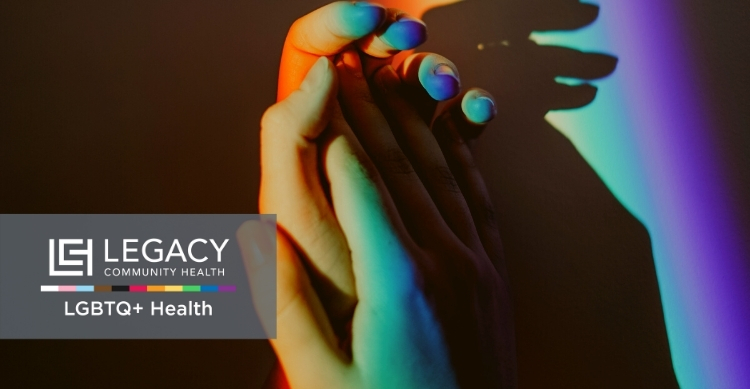By Barrett White
Today is National Coming-Out Day. LGBTQ History Month runs from October 1-31.
It’s well established that June is LGBTQ Pride Month in recognition of the Stonewall Riots of June 1969, so why do we celebrate LGBTQ History Month in October? According to the observance’s official homepage, in 1994, Rodney Wilson, a Missouri high school teacher, believed a month should be dedicated to the celebration and teaching of gay and lesbian history, and gathered other teachers and community leaders in support of the cause. They selected October because American public schools are in session and existing traditions such as today, Coming Out Day (October 11), occur during this month. National Coming Out Day marks the anniversary of the National March on Washington for Lesbian and Gay Rights on October 11, 1987.
“In 1987, was very thin and living with HIV, but we had a really good group that went up to DC from Houston that year. That was the year they had the buttons that said, ‘I was there, I was one in a million at the March on Washington’ with a pink triangle,” says Brian Keever, who attended the watershed 1987 march. Today, Keever is a greeter and volunteer at Legacy Community Health. “I was helping a friend of mine, staying with him just across the bridge in Virginia. I was there in 1987; we also had the [AIDS Quilt] there in 1988. It was wonderful to see the gays showing up in the subways with pride colors and buttons. I know people who it was the first time they’d ever done something like that.”
Legacy honors the observance each year not only to uplift the LGBTQ community, but to honor our own history. The Montrose Clinic, which grew to become Legacy Community Health, was originally founded as a health clinic by and for gay men where the community could go for judgement-free care. Though the early volunteers at the Montrose Clinic were pioneers in the field of LGBTQ health care here in Houston, they weren’t the first. Let’s get to know some of the other innovators in queer medicine who came before us, and some who still work alongside us:
Phill Wilson (he/him) is a prominent Black HIV/AIDS activist. After the death of his partner from HIV, he founded the Black AIDS Institute in 1999. Wilson was later appointed to President Obama’s Advisory Council on HIV/AIDS and served as a World AIDS Summit delegate advocating for the CDC to provide additional funding to Black-led HIV/AIDS advocacy groups. He was a forerunner in the creation of the “Let’s Stop HIV Together” campaign, which promotes HIV testing, prevention and treatment.
Dr. Colt St. Amand (he/they) is a Texas Licensed Psychologist with expertise in gender and sexuality as well as a Family Medicine resident. St. Amand is an openly transgenderqueer Two Spirit man who works with gender and sexual minorities, their loved ones, and those seeking to learn more about gender and sexuality. He provides consultation and WPATH GEI certification mentoring for clinicians working with transgender and gender expansive clients. St. Amand also co-founded Gender Infinity, which offers gender-affirming support in the forms of an annual conference, camps, and family gatherings.
Dr. Sophia Jex-Blake (1840-1912) wanted to earn a medical degree, but was prevented from studying for one because she was a woman. She took the matter into her own hands, founding the London School of Medicine for Women. The university became the only place a woman could earn a medical degree in the UK for many years. Between its opening and 1911, the number of women doctors in the country skyrocketed from two to 495. She became the first woman M.D. to practice in Scotland. While many medical historians are familiar with Jex-Blake’s legacy as a medical pioneer, one aspect of her personal biography is commonly left out—her romantic partners were women.
Dr. Emily Blackwell (1826-1910) was among the first women in the United States to earn an M.D. Blackwell helped established a women’s hospital in New York, later adding a women’s medical college to the experiment. Blackwell met Dr. Elizabeth Cushier (1837-1931) when Cushier became a student at Blackwell’s college. Later, Cushier began working alongside Blackwell at the hospital. Blackwell and Cushier raised an adopted daughter together. In 1981, Blackwell’s hospital relocated and merged with another institution. It’s now known as the New York-Presbyterian Lower Manhattan Hospital.
For more stories on Legacy’s 40 years of care – including Brian Keever’s – be sure to check out the Power of 40 campaign, updated weekly with new testimonies from over the last four decades.

